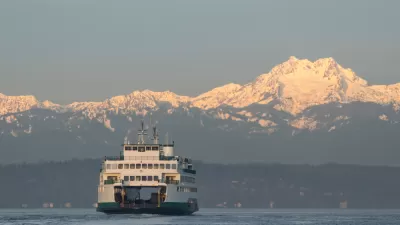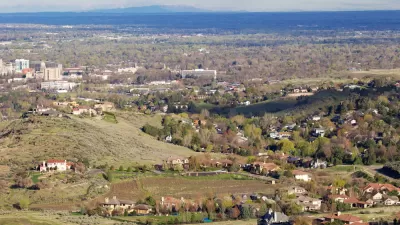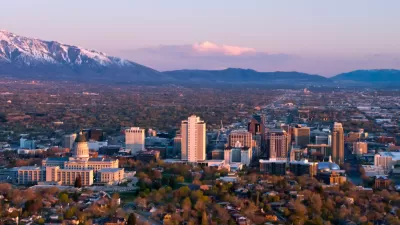The density debate can't be avoided in fast-growing Utah, according to the researchers and political leaders who support the findings of a new report from the University of Utah's Kem C. Garner Policy Institute.

Tony Semerad reports: "With Utah’s housing shortage now reaching crisis worsened by the pandemic, researchers at the University of Utah have published a new guide to help cities encourage more homebuilding at more accessible prices — including some ideas not always popular with existing residents."
The Salt lake City Chamber of Commerce sponsored the research from the University of Utah's Kem C. Garner Policy Institute. The research provides a list of best practices, led, according to Semerad, by rezoning land to allow for higher-density development. According to the study, all the other recommended best practices depend on adding new density. "[W]ithout it, the institute’s economic analysts say, there is 'little chance' Utah’s cities and towns will get ahead of the problem," according to Semerad.
The article provides context for the density debate and also provides an explanation of the concepts behind transit oriented development—the latter is presented as am alternative to automobile-oriented sprawl.
"The U. study touts American Fork and Farmington, in particular, for significant successes in building major developments around their FrontRunner stops, with housing for residents in a variety of economic and social circumstances. South Salt Lake has seen similar advances, it says, with new zoning along TRAX lines, the S-Line streetcar routes and in its city center," writes Semerad.
FULL STORY: There are ways Utah cities can boost affordable housing. But some residents may not like them.

Planetizen Federal Action Tracker
A weekly monitor of how Trump’s orders and actions are impacting planners and planning in America.

San Francisco's School District Spent $105M To Build Affordable Housing for Teachers — And That's Just the Beginning
SFUSD joins a growing list of school districts using their land holdings to address housing affordability challenges faced by their own employees.

The Tiny, Adorable $7,000 Car Turning Japan Onto EVs
The single seat Mibot charges from a regular plug as quickly as an iPad, and is about half the price of an average EV.

Seattle's Plan for Adopting Driverless Cars
Equity, safety, accessibility and affordability are front of mind as the city prepares for robotaxis and other autonomous vehicles.

As Trump Phases Out FEMA, Is It Time to Flee the Floodplains?
With less federal funding available for disaster relief efforts, the need to relocate at-risk communities is more urgent than ever.

With Protected Lanes, 460% More People Commute by Bike
For those needing more ammo, more data proving what we already knew is here.
Urban Design for Planners 1: Software Tools
This six-course series explores essential urban design concepts using open source software and equips planners with the tools they need to participate fully in the urban design process.
Planning for Universal Design
Learn the tools for implementing Universal Design in planning regulations.
Smith Gee Studio
City of Charlotte
City of Camden Redevelopment Agency
City of Astoria
Transportation Research & Education Center (TREC) at Portland State University
US High Speed Rail Association
City of Camden Redevelopment Agency
Municipality of Princeton (NJ)





























